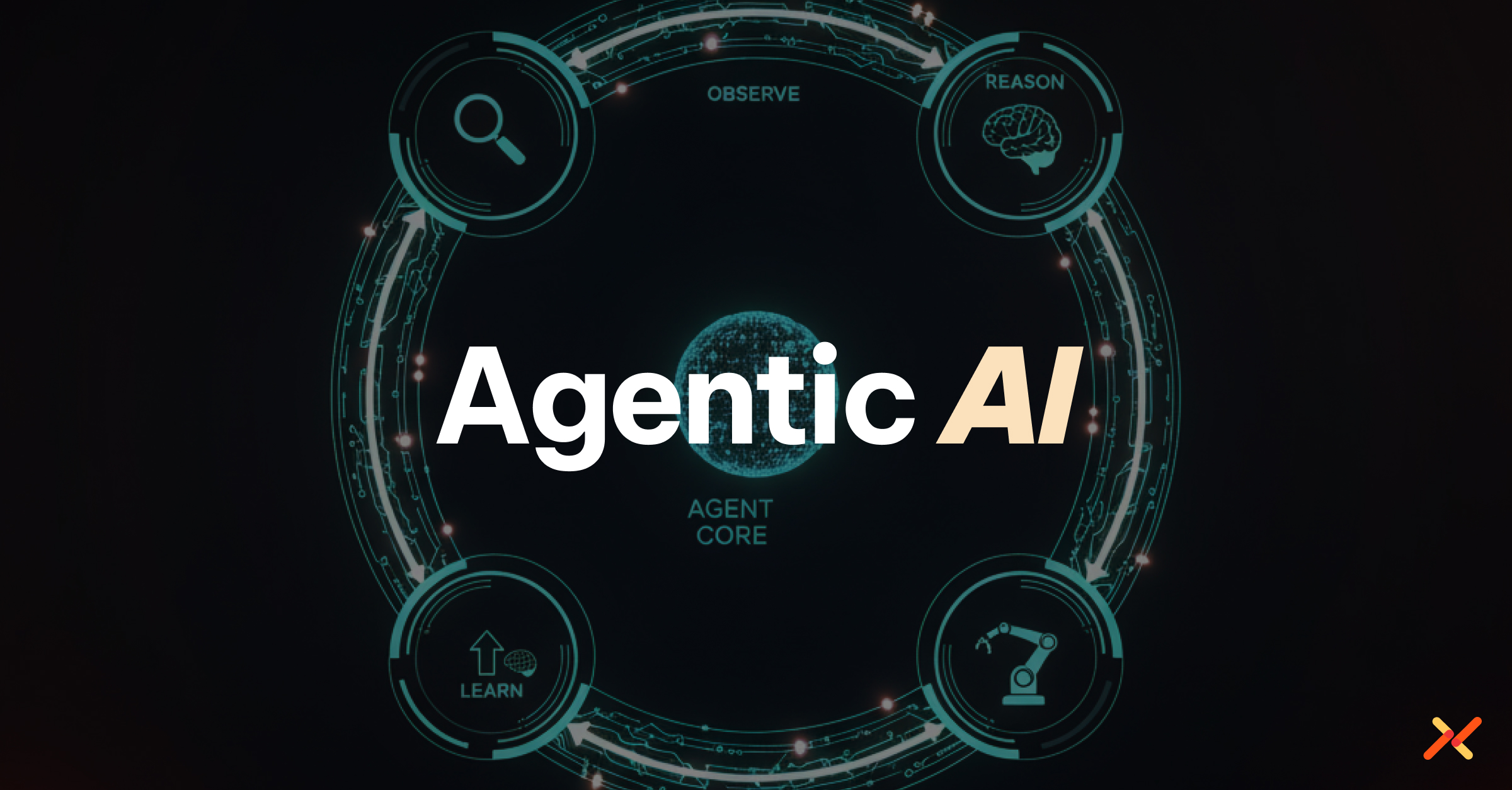Agentic AI refers to artificial intelligence systems that can pursue goals, make decisions, and take real-world actions with varying levels of autonomy, often operating independently, but still benefiting from human oversight or feedback when needed.
How Agentic AI Works
Agentic AI combines large language models (LLMs) with planning, reasoning, and tool-use capabilities. An agent typically:
- Receives a high-level goal (“file the security report”).
- Breaks it into sub-tasks (“retrieve metrics,” “summarize anomalies,” “send email”).
- Uses APIs, databases, software tools, or even other agents to complete each step.
- Evaluates outcomes and adjusts its plan if needed.
This loop—observe → reason → act → learn—creates adaptive, semi-autonomous behavior. Frameworks like LangChain, LlamaIndex, and the Model Context Protocol (MCP) provide structure for how agents communicate with external systems safely and consistently.
Why Agentic AI Matters
Agentic AI represents a major shift from information retrieval to execution. For enterprises, it promises:
- Operational automation: Agents can triage tickets, deploy infrastructure, or analyze incidents without human intervention.
- Productivity gains: Teams offload routine coordination work to autonomous systems.
- Faster decision cycles: Agents can run experiments and surface insights in real time.
However, the rise of autonomous AI also raises new governance and security questions. When machines act independently, organizations must define how they are authenticated, what boundaries they operate within, and who remains accountable.
Common Challenges
Identity-based Challenge
- Non-Human Identity Management: Each AI agent needs a verifiable identity to authenticate securely when invoking tools or APIs. Without a verifiable workload identity, agents often rely on impersonation or delegated human credentials, effectively acting on behalf of a user account, which introduces risk and traceability gaps.
Non-Identity Challenges
- Unpredictable Behavior: Agents may take unintended actions when goals are ambiguous or context shifts mid-execution.
- Context Integrity: Shared memory or prompt injection attacks can corrupt an agent’s understanding of its environment.
- Tool Misuse: Over-permissioned integrations let agents perform destructive operations (e.g., deleting files, altering configs).
- Audit and Compliance: Traditional logging systems aren’t designed to capture autonomous, multi-step decision chains.
How Aembit Helps
Aembit secures the machine-to-machine layer that powers Agentic AI. Rather than issuing new identities, it verifies and governs the workload identities that agents, services, and tools already possess, enforcing trust and control across every interaction.
With Aembit:
- Agents gain access without handling secrets or static tokens, relying on attested workload identities from trusted environments.
- Policies apply least-privilege access dynamically at runtime based on identity and context.
- Security teams gain full visibility into which agents accessed which systems and when.
- AI systems connect safely to corporate APIs and data sources through secretless, identity-aware access.
In short, Aembit turns agentic environments from “any AI can act” to “only verified agents can act safely.”
Related Reading
- Securing AI Agents Without Secrets
- Related Terms: Model Context Protocol (MCP), Workload Identity, Zero Trust, AI Security

